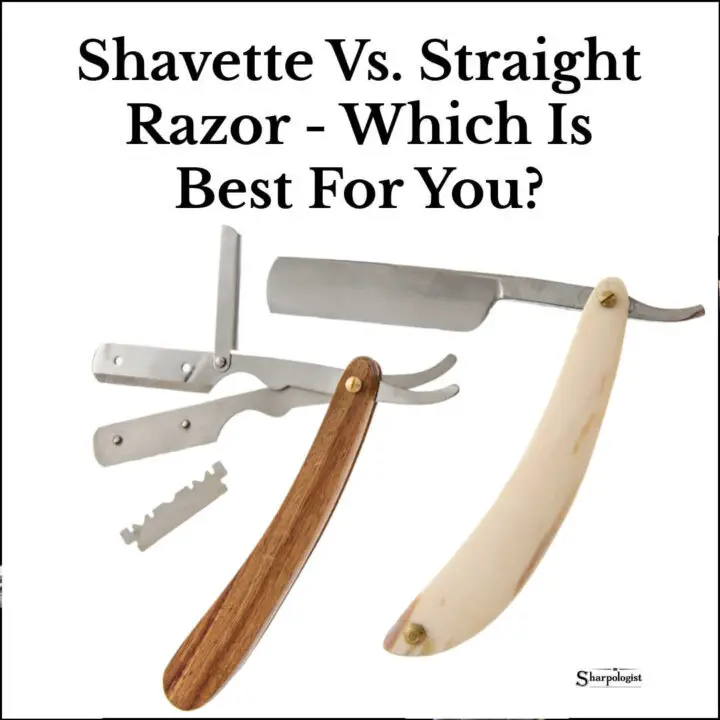
So you’ve decided it’s time to switch to a straight razor or shavette. But which one is right for you? In this article, I’ll take a look at the pros and cons of each option, so you can make the best decision for your needs.
What Is A Shavette?
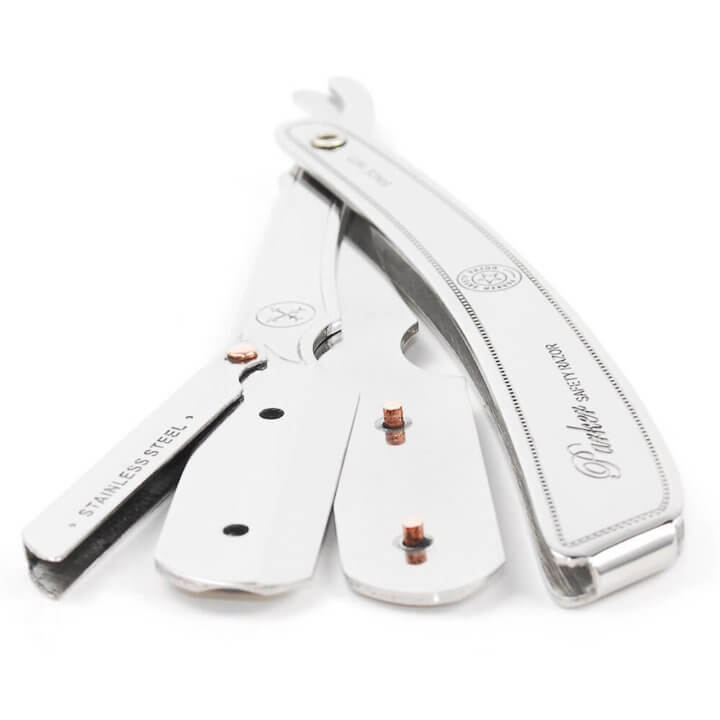
A “shavette” style razor, sometimes called a “barber straight razor” (because some states don’t allow barbers to use a regular straight razor for hygiene reasons), looks similar to a straight razor but uses a replaceable, disposable blade instead of a fixed, permanent blade.
But while a shavette may look like a straight razor (well, kind of), it may not necessarily behave like a straight razor.
Why Is It Called A “Shavette?” The Original Dovo Shavette Razor
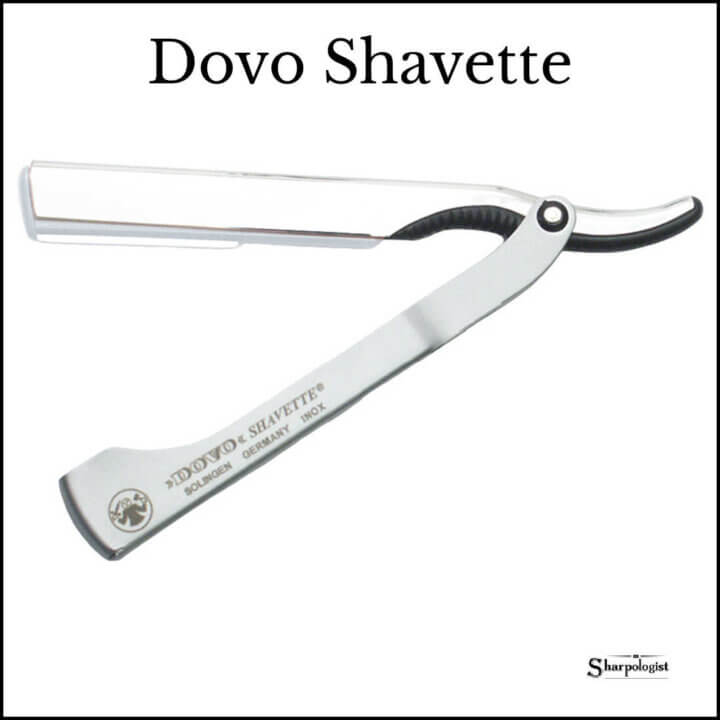
So why is it called a “shavette?” Like “Xerox” and “Kleenex,” it is a product name that has come into general use (among shavers anyway). The replaceable blade straight razor first made its appearance around World War I, with the Dovo Shavette (Amazon affiliate link) becoming the most popular.
From the Dovo website:
“Sadly, the First World War was responsible for the fact that shaving was not only fashionable but even essential for survival at that time. So that the soldiers could survive the gruesome gas attacks in the trench warfare, it was essential to guarantee the secure fit of the gas mask with a shaved face. For this reason safety razors became very popular among the population. Straight razors with interchangeable blades, similar to our Shavette, were now on the market.”
For the purpose of this article the word “shavette” will generally refer to a razor with a folding clasp and a replaceable blade, with a shape that is similar to a straight razor.
What is a straight razor?
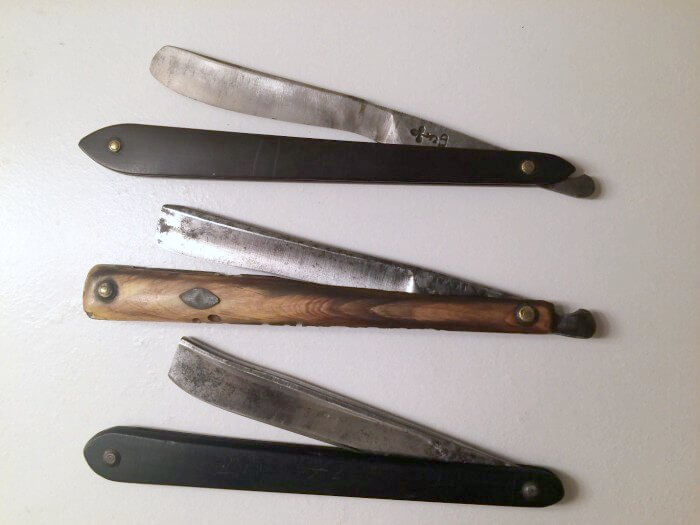
From Wikipedia:
“A straight razor is a razor with a blade that can fold into its handle. They are also called open razors and cut-throat razors….”
“…The design of the straight razor is based on the grind of the blade, the width and length of the blade, the handle, which also affects the balance of the razor, the material of the blade, and the finish and degree of polish of the blade material.”
Traditional straight razors are the original shaving tool, created long before the invention of the safety razor. They are an affordable option (over the long term) for those looking for a quality shave. Straight edge razors are made up of a blade that is not meant to be thrown away and has to be sharpened and cleaned periodically.
Parts Of A Straight Razor
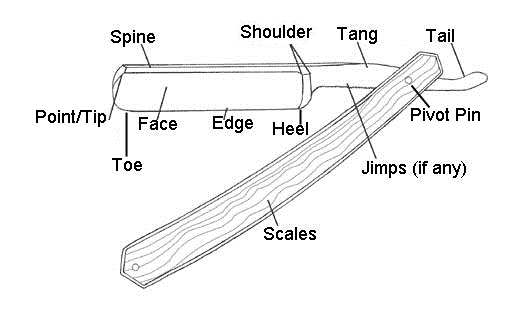
If you’re interested in learning about straight razors, or are thinking about purchasing one, it’s important to know the different parts of the razor. The blade is the most important part, of course, but the handle, scales, and other pieces all play a role in how your razor functions. Here’s a quick overview of the different parts of a straight razor.
Straight Razor Blade Sizes
The straight razor blade’s width is usually expressed in one-eighth inch increments from the blade spine to the blade edge. So a “5/8” blade refers to five-eighths of an inch. Smaller blade widths make working in tight areas (like under the nose) easier, while larger widths work well for knocking down heavy beard growth.
Blade Point
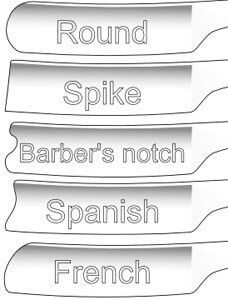
The point is the blade’s far end, which can feature various shapes. The shape of the point is for more carefully shaving hair around hard-to-reach places like ears and nose.
Metallurgy
The two most common metals used in straight razors are carbon steel and stainless steel. Carbon steel is the traditional material of vintage (and many modern) straight razors, generally smoother-feeling on the skin, and easier to sharpen. Stainless steel is less prone to corrosion and the blade edge stays sharper, longer. However keep in mind the “temper” of the metal is variable no matter what the metallurgy is. More on “temper” later in this article.
Grind
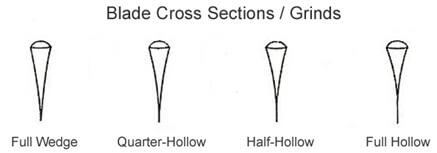
The grind refers to the shape. thickness, and flex of the blade edge. The wedge type is the thickest, least flexible ground type and gets progressively thinner until you reach the full-hollow–or even extra hollow–type.
Related Post: Straight Razor Kit By Cut Throat Club – A Curated Set Of Products For Shaving Success
Major Comparison Points Between Shavette-Style And Straight Razors
Shavettes and straight razors share a lot of commonalities, but there are also some key differences.
Blade Composition, Size, Hygiene, And “Forgiveness”
A shavette and a straight razor have similar design; however, it is the blade that makes the difference. A straight razor has one blade that is solid and cannot be replaced, while a shavette blade can be replaced.
Straight razor blades are made of either carbon steel or stainless steel (with carbon steel being most prevalent). Blades for shavettes, like other common consumer shaving blades, are typically made out of Martensitic stainless steel (a heat-hardened metal) usually with some kind of non-stick coating.
Blades used in shavette razors are shorter than the great majority of straight razors, using either double edge razor blades (snapped in half the long way) or a “shaper blade” (which is only slightly longer).
A comparison of the thickness of blades between shavette razors and straight razors is a minor point of contention with advocates of both alternatives. There is certainly an aspect of “flex” of the blade–with “flex” considered a negative attribute, contributing to the possibility of a nick or cut. Many straight razor users consider the thin, flexible blade of shavette razor too unstable. On the other hand a straight razor with a grind of “extra-hollow” (or even “full-hollow”) described earlier also has some “flex” to it.
Straight razors have a variety of blade points, as described earlier. Shavette-style razors do not.
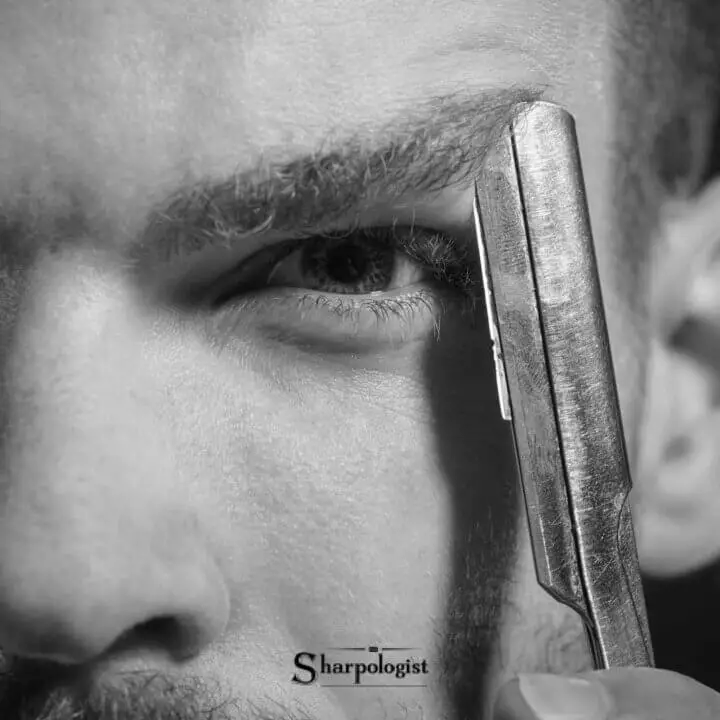
Weight & Balance
Straight razors are typically heavier than shavette-style razors. The balance of the two types of razors are different as well, though a comfortable balance is in the hand of the beholder.
Maintenance
There is no doubt that a straight razor is more maintenance-heavy. A straight razor requires much more regular maintenance of the blade edge.
Cost & Expenses
A straight razor is generally considered more expensive “up front” but more economical (and environmentally friendly) over the long term.
Advantages Of Shavettes
- More hygienic in a multi-user setting (e.g. barbershop);
- Easier to maintain than straight razors because the blades can be easily replaced;
- No need to strop or hone the blade;
- Generally cheaper to purchase “up front” than straight razors;
- Replacement blades are inexpensive.
Advantages Of Straight Razors
- A very close shave when used by a skilled shaver;
- Economical and environmentally friendly in the long term compared to disposable razors (and even safety razors);
- Better quality, more durable blades (when obtained from a reputable source).
Disadvantages Of Shavettes
- The shorter, thinner cutting edge can be quite difficult to work with accurately;
- Lack of craftsmanship;
- Blades dull quickly.
Disadvantages Of Straight Razors
- They need to be sharpened and maintained periodically;
- Straight razors and their accessories are more difficult to find and are more expensive than other methods of shaving in the short term;
- Essentially “zero” safety features. Make a mistake and odds are you will draw blood.
Should You Start With A Shavette Or A Straight Razor?
Perhaps the biggest disadvantage to using either a straight razor or a shavette-style razor is that it takes time to learn the skills of shaving with one to get good at it.
Most shavers who have tried both generally agree that starting with a straight razor and migrating to a shavette is easier than starting with a shavette and migrating to a straight razor.
Some Well-Regarded Straight Razor Examples
[Note: Cut Throat Club and geni.us links are affiliate.]
There are many straight razors on the market. Here is a small sample of well-regarded straight razors. If you would like more information on what you should buy, click/tap here to read: What Is The Best Straight Razor For Beginners? A Guide By Experts.
Dovo Bismarck
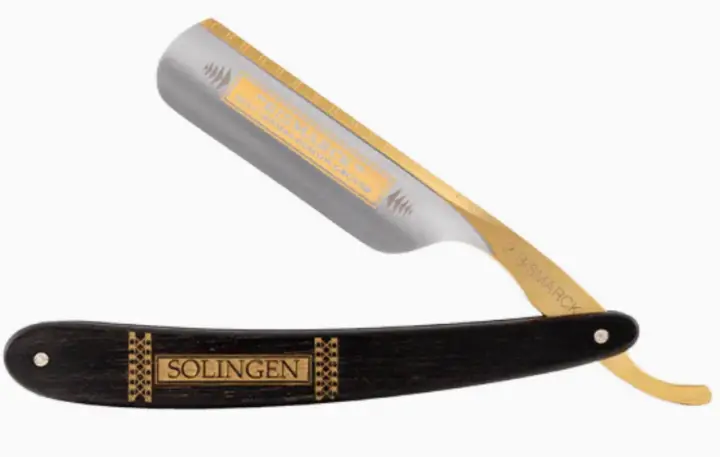
The Dovo Bismarck 6/8 Razor is a carbon steel blade that is 6/8″ wide. It is a full hollow edge razor that has a variety of handles (“scales”) including woods and acrylic. The Bismarck is a definite upgrade from the lower-cost entry straight razors – the Bismarck cuts more precisely, and with less irritation, and the blade is sturdier. The handle has a smooth, matte finish, and the razor is well-balanced. The handle feels sturdy but light. The blade is carbon steel, not stainless steel, and the quality is impeccable. It’s not the cheapest razor out there, but it’s worth the money.
Ralf Aust 5/8″ Round Point
The Ralf Aust 5/8” Round Point razor is considered an excellent value, suitable for the beginner and features a 5/8″ satin-finished carbon steel blade. The glossy black synthetic scales are robust.
Ralf Aust has risen in the past few years to one of the premier German straight razor manufacturers. Ralf Aust and his fellow workers are creating high quality straight razors.
Boker 6/8″ Elite Carbon 3.0
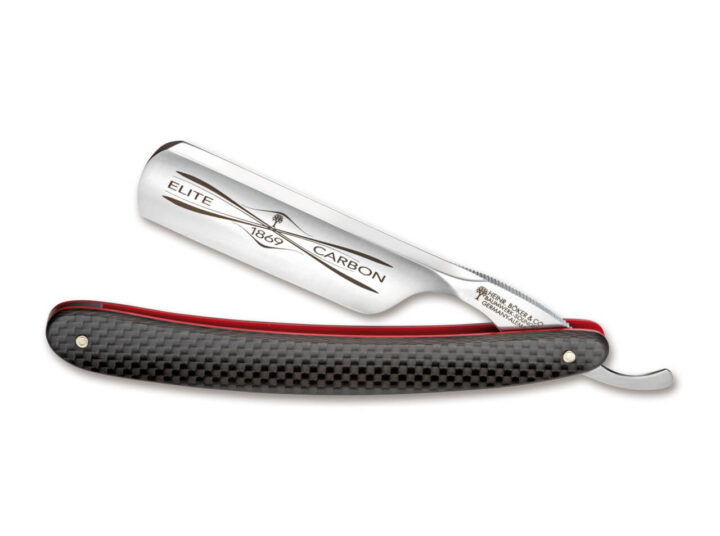
The Boker Elite Carbon 3.0 razor is made of carbon steel at 6/8” with two bevels on the back and scales milled from a block of high tech carbon fiber. Over 100 years ago Boker sold a line of extravagant straight razors under the “Boker Elite” name, which they are re-launching.
Some Popular Shavette-Style Razor Examples
Like straight razors, there are many examples of shavette-style razors. Again, here is a small selection of popular ones.
Parker SRX
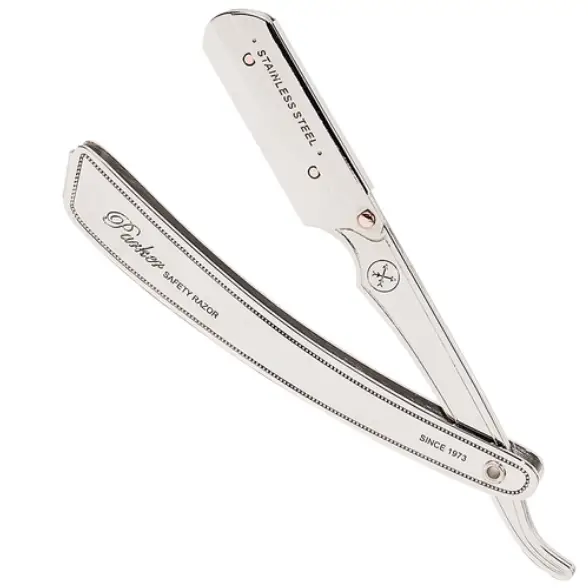
The Parker SRX is a stainless steel straight edge razor that is very popular, particularly with barbershop professionals. It is durable and equipped with a rounded exposure at the end of the blade compartment to help minimize nicks. The clip/lock blade holder allows you to securely insert the blade. The blades can be removed and replaced easily.
Feather Artist Club
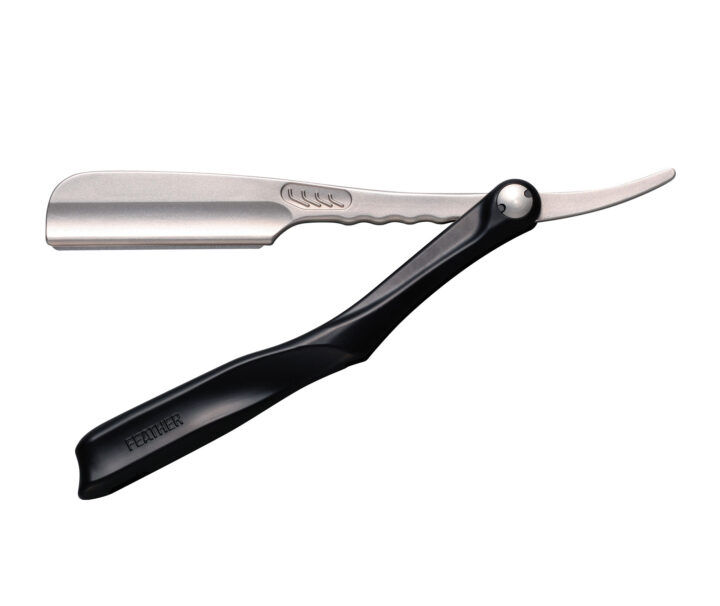
Feather sells several Artist Club models, all with the same basic specs and appearance, though the Artist Club SS series seems to be the most popular. It has rounded edges for a comfortable grip, and a spring-mounted blade replacement mechanism that allows you to quickly change your blades without touching the blades. The blade itself is curved to shave close to the skin, so it’s sure to catch every hair. Some shavers maintain that the Feather Artist Club is the shavette-style razor that comes closest to the straight razor experience.
Dovo Shavette
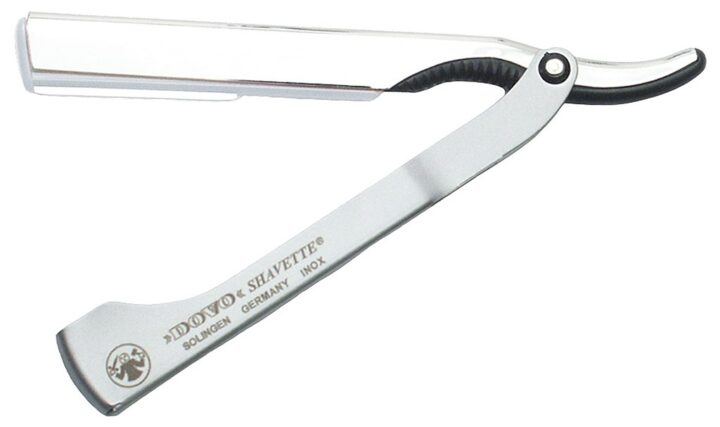
The Dovo Shavette razor features a unique blade carrier that is compatible with most brands of single edge blades, making it quite versatile.
Conclusion
Summing up, when deciding between a shavette razor and straight razor, there are many factors to consider. Both have their own benefits and drawbacks, so it is important to weigh the pros and cons of each before making a decision. Ultimately, the type of razor that is best for you depends on your individual preferences and needs.
Related Post: Shavette Vs. Safety Razor: How Do They Compare?
